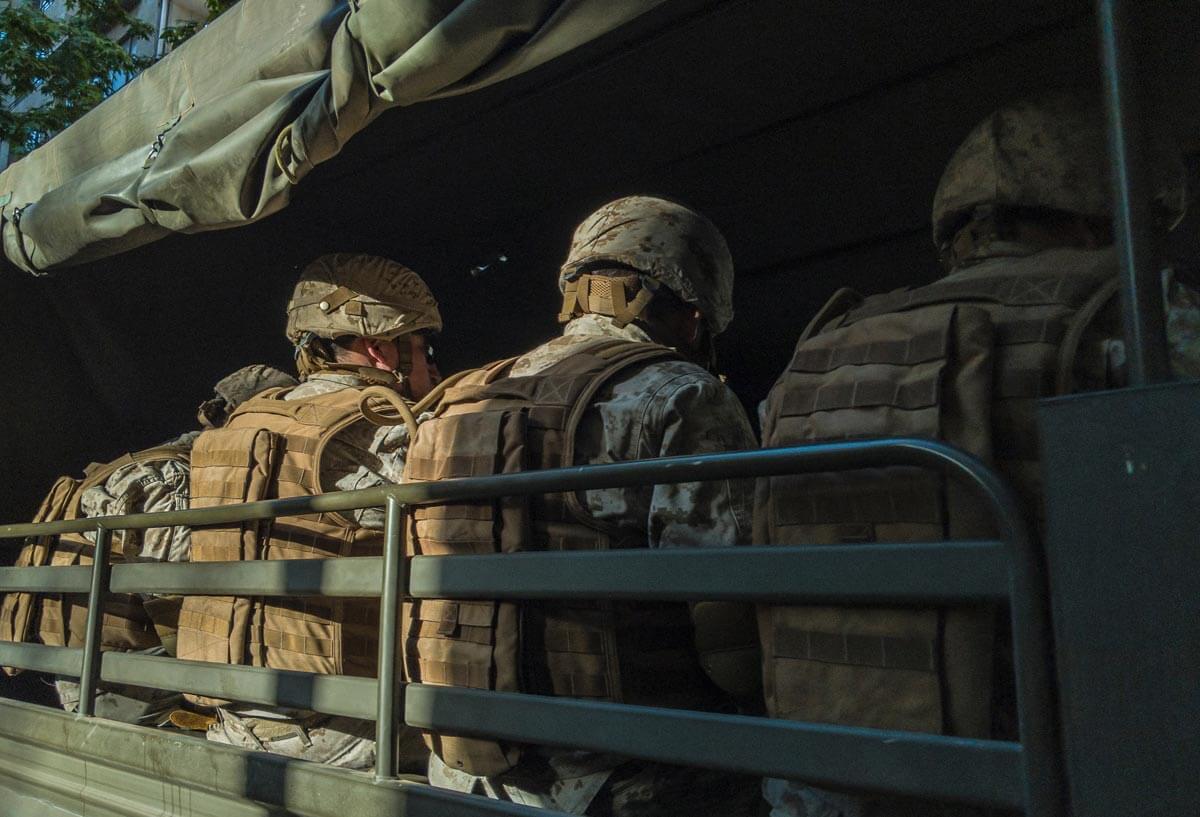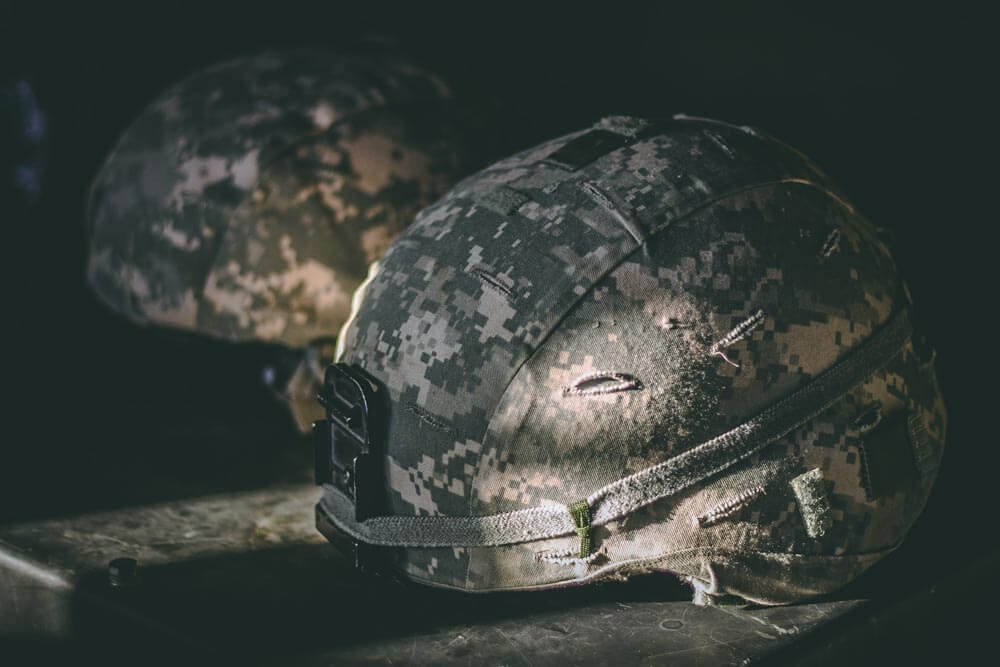 We have been hearing a lot about the opioid overdose crisis and for good reason. Between 1999 and 2016 there was a 500 percent increase in opioid-related deaths. That’s a big increase and it seems like our military is patient zero in this epidemic.
We have been hearing a lot about the opioid overdose crisis and for good reason. Between 1999 and 2016 there was a 500 percent increase in opioid-related deaths. That’s a big increase and it seems like our military is patient zero in this epidemic.
Veterans are seven times more likely to die of an opioid overdose than civilians. The U.S. Department of Veterans Affairs estimates that in 2016 68,000 veterans were treated for opioid abuse. From 2000 to 2016 the rate of opioid-related death for veterans doubled, despite successful programs to reduce painkiller prescriptions for veterans.
What are the Factors?
Several studies have been done to understand why the rates of opioid overdose are increasing for veterans. One of the latest done by the National Bureau of Economic Research (NBER) is tilted Did the War on Terror Ignite an Opioid Epidemic and aims to answer that question.
The War on Terror officially began on September 11, 2001, and, to a certain extent, is still ongoing. The doubling of the rate of opioid-related deaths for veterans during that time period indicates that the war on terror did ignite an opioid epidemic. The question is why?
NBER researchers hypothesized three different mechanisms for opioid addiction within the military:
- War-related injuries
- Battlefield trauma
- Exposure to low-cost opioids
Ultimately, the study found ample evidence to connect an increase in painkiller abuse to war-related injuries and battlefield trauma. The connection to the availability of low-cost opioids was less measurable due to a lack of data.
The Danger of Combat Exposure
The NBER study concluded that – more than just war-related injuries or battlefield trauma – combat exposure was the main factor in painkiller abuse by veterans. Veterans exposed to combat were seven percent more likely to abuse painkillers than veterans not deployed to a combat zone. This was true for veterans who were wounded, but also for those not wounded, indicating that trauma and injuries are both significant mechanisms that are tightly intertwined.
According to the Center on Addiction: “Almost one in three veterans seeking treatment for addiction also has PTSD, and over 20 percent of veterans with PTSD also have addiction. Approximately one in 10 soldiers returning from the Iraq and Afghanistan wars who were seen in a Veterans Affairs hospital have had a problem with alcohol or other drugs.”
Approximately one-third of veterans with painkiller addictions can trace that addiction back to injuries, while the rest trace back to trauma or PTSD. Studies have shown that the impact of war is stronger on younger veterans. This was validated in the NBER study, with 18 to 24-year old enlisted service members being the largest group with opioid addiction problems.
The NBER study found that among commissioned officers there was very little opioid abuse. Officers differ from enlisted personnel in that they are mainly management, they typically earn a higher salary, and they have a four-year college degree. Officers are typically “older individuals…of higher rank and have re-enlisted, reflecting greater resilience, better health, or particular personality traits that reduce the opioid abuse effects of combat.”
Exposure to low-cost opioids
 Most evidence of service members developing opioid addictions through increased exposure to low-cost opioids is anecdotal and cannot be connected with the data available to researchers. The researchers on the NBER study found evidence suggesting that “addiction may not occur only via one’s own physical injuries, but also through psychological, peer-related, or low-cost supply channels.”
Most evidence of service members developing opioid addictions through increased exposure to low-cost opioids is anecdotal and cannot be connected with the data available to researchers. The researchers on the NBER study found evidence suggesting that “addiction may not occur only via one’s own physical injuries, but also through psychological, peer-related, or low-cost supply channels.”
There was an increase in opium supply post-2001, starting with the U.S. led invasion that kicked out the Taliban. The Taliban had a strict ban on opium poppy growing, stemming from Islamic laws. This increase in production caused a reduction in price, with illicit opioids available to service members sometimes less than a then of the cost found in the United States. Additional UN efforts to reduce the number of opium poppies grown in Afghanistan have been only moderately successful, with production still thriving in southern areas.
Substance abuse during wartime is nothing new. During the Vietnam War cheap opium was abused by many service members. However, contrary to what we are seeing now, the opioid abuse during Vietnam was from recreational use and not from prescriptions.
There is also something to be said for the brotherhood and peer-pressure experienced during deployment. Most military members report a culture of heavy drinking or illicit drug use that begins during training and escalates during deployment.
Get Your Questions Answered Now.
Post-Deployment Support
 Often, veterans have little support and feel very isolated when they return home from deployment. Low-income youth are sold the idea of entering the military as a way out of poverty. They can return home to neighborhoods with high crime, poverty, homelessness, unemployment, and substandard housing – all known to significantly increase the risk of addiction.
Often, veterans have little support and feel very isolated when they return home from deployment. Low-income youth are sold the idea of entering the military as a way out of poverty. They can return home to neighborhoods with high crime, poverty, homelessness, unemployment, and substandard housing – all known to significantly increase the risk of addiction.
According to the National Development and Research Institute, “many veterans no longer have the secure housing, steady paychecks and other supports that are provided by the military, all of which can be significant assets during readjustment.” Additionally, there is no drug testing or discipline for failing drug tests for non-active duty members, removing a factor that may have deterred some service members from abusing opioids during active duty.
Changing Trends
In 2013, the Veterans Health Administration (VHA) started an initiative to reduce the number of opioids being prescribed to veterans in response to the alarming number of semisynthetic/natural opioid-related deaths. This program has been successful at reducing the number of opioids prescribed to service members, however, it has not caused a reduction in opioid overdose mortality.
According to the American Journal of Preventive Medicine, “overdose patterns in recent years have shifted from natural/semisynthetic opioids to heroin and synthetic opioids, primarily from illicit sources.” The main way the VHA has reduced opioid prescriptions is by increasing the cost of the painkillers. This likely has a heavy impact on veterans who rely on opioids for legitimate pain, especially since veterans are more likely to experience homelessness and unemployment.
This has mirrored the increase in opioid overdose rates related to synthetic or illicit opioids in the general public. Everywhere we are seeing more and more people being cut off from prescription opioids – leading them to illegal sources.
Only one-third of veterans with an opioid prescription filled that prescription within a three-month timeframe prior to overdosing. That means two-thirds are overdosing on illegal opioids, even when they have access to the prescription. The VHA needs to shift opioid overdose research and education beyond just prescription-related and should view prescribed opioid overdoses as different than heroin and synthetic opioid overdoses.
“Approximately 45 percent of veterans suffer from chronic pain, a rate three to five times higher than civilians.” Studies point to a prescription for legal opioids causing a reduction of the risk of heroin and illicit opioid abuse. All of this begs the question: does the path to reducing opioid overdoses in veterans include prescribing more opioids?
Medical Marijuana
The NBER study suggested that medical marijuana could be a route to helping veterans with pain relief while reducing opioid-related overdoses. Medical marijuana has the advantage of being chemically non-habit forming and there is almost no risk of an overdose. Unfortunately, the jury is still out on this one. Recent studies seem to show that medical marijuana doesn’t have a positive impact on the opioid overdose mortality rate.
Economic Impact
Because the NBER study was done by an economic research center, the economic impact of the opioid epidemic within service members was also studied. It found that the cost of health care for veterans with prescription painkiller abuse was between $1.2 and $1.7 billion per year. The health care costs for heroin use is around $800 million per year.
If you or your loved-one is seeking help for substance addiction, call us at (714) 400-2048 and look into our drug and alcohol rehab programs. Our programs and recovery center helps clients by providing them with detox, family intervention, and long-term outpatient or residential treatment if necessary.
Other Articles you might be interested in:
Understanding the Different Stages of Recovery at Broadway Treatment Center in Orange County
Recovery from addiction is not a one-size-fits-all journey. It’s a...
Mind-Body Connection: The Role of Yoga in Recovery
In recent years, holistic therapies like yoga have gained...
Navigating Social Situations in Recovery
Recovering from addiction is a life-changing journey that often...



